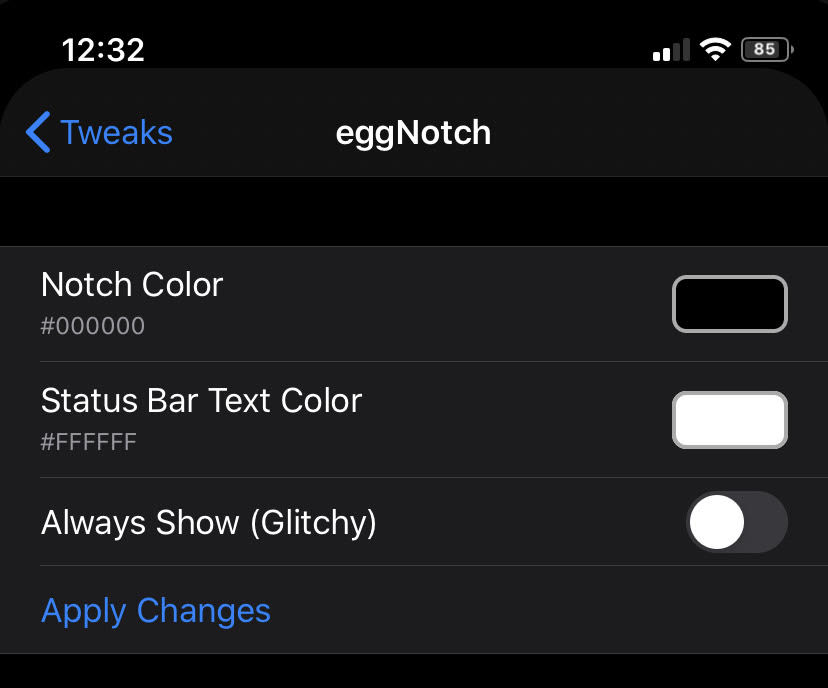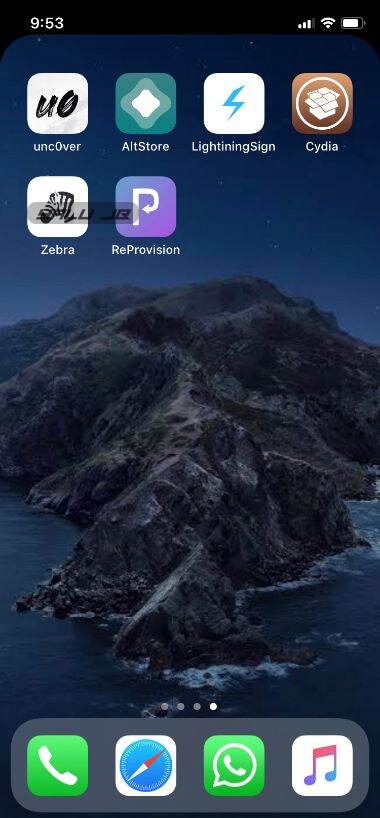

- Notch simulator tweak andoid install#
- Notch simulator tweak andoid full size#
- Notch simulator tweak andoid android#
- Notch simulator tweak andoid code#
Notch simulator tweak andoid code#
In essence I want everything to function like the iPhoneX default - where I never need to panic about obscured content - but then opt-out of that with specific use cases like the hero or the navigation.Īnd this is the CSS code ( view it here on CodePen): body Yes I want cake, but I want to eat it without looking over my shoulder, too. I also want a solution that plays nicely with everything that’s gone before, and won’t need constant maintenance in the future when new content or blocks come along.
Notch simulator tweak andoid android#
The Safari webkit team have got us covered with a new concept that is implemented here and submitted to the W3C - safe-area constants (We’ll see how this plays out with Google’s submissions for shaped screens that was meant to deal with round Android watches).īut god-almighty I don’t want to tweak every element for this brave new world. The navigation is absolutely positioned, so it too is partially obscured because it’s relative to the document’s zero-zero (a point which is behind the rounded corner and almost outside the boundaries of the physical phone itself). We’ve got our nice full-width hero back, but the content is now starting to be obscured by the browser UI in an annoying way. Website dimensions on an iPhone X/iOS 11.0 in landscape with viewport-fit=cover To prevent bad-things™, the Safari team at Apple made the default setting letter-box your site so that the corners and notch never cover something important:
Notch simulator tweak andoid full size#
The full size “square” of the iPhoneX screen is accessible in theory, but the notch and the rounded corners essentially sit over the top, obscuring your hard-earned pixels. Using a phone in landscape has often been considered on the “edge-case” side of website development, but with increasingly larger viewports it’s becoming more mainstream, and is often more popular than more commonly tested-for ‘7” tablet’ device type that fits between phones and iPads.

This is where it gets interesting, because we are now in notch territory. At it’s full 100vh viewport it is almost a 1:2 aspect ratio, similar to browsers on the Samsung Galaxy S8 or LG G6.

Despite having a narrower viewport than the iPhone 8+, it has a taller viewport in every situation.Hence the iPhone X only gains 81px in usable document height over an iPhone 8, but when scrolled, this increases to 121px. That new home-bar at the bottom and the bunny ears at the top take quite a lot of screen space when the full UI is shown.Notice that the X has the same 375px viewport width as the iPhone (not the 414px of the iPhone plus).Note I’ve included what the adjustments for 100vh, which for some time has presented the height of the screen to CSS as that when it is scrolled - in iOS and Android, not desktop - and not when the full UI is shown (dammit). Here are the measurements for an iPhone 8 vs iPhone X in iOS11.0.

Use the images below for help if you get lost along the way.The viewport changes on an iPhone X/iOS 11.0 in portrait After, a pop-up will say you are now a developer. The final step is to repeatedly tap on the Build number until you’re asked to verify your lockscreen security. From there, tap on About phone and locate Build number. To do this, head into your phone’s settings menu and select the System option. With everything set up, the first step is to enable Developer Options. We have published an Android Basics guide that’ll walk you through the entire process.
Notch simulator tweak andoid install#
If you haven’t already, you’re going to need to install Android P Developer Preview 1 onto your Google Pixel, XL, 2, or 2 XL. Steps to simulate a notch on devices running Android P Developer Preview 1 With the release of Android P Developer Preview 1, Google is letting developers prepare their apps for phones with ‘notches’ by simulating a display cutout on Pixel handsets.


 0 kommentar(er)
0 kommentar(er)
